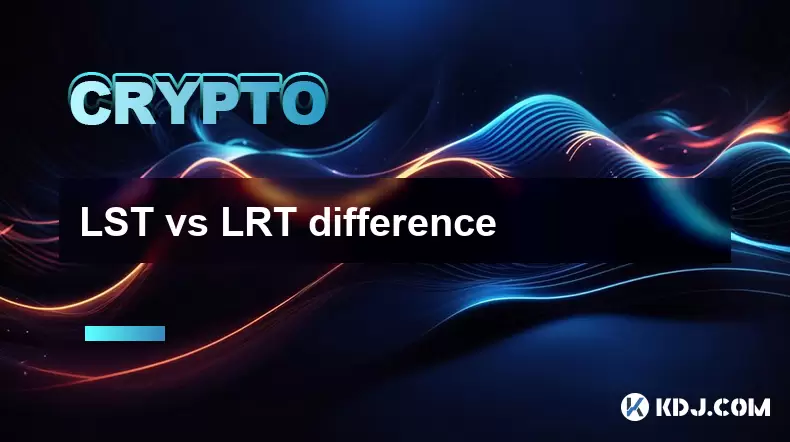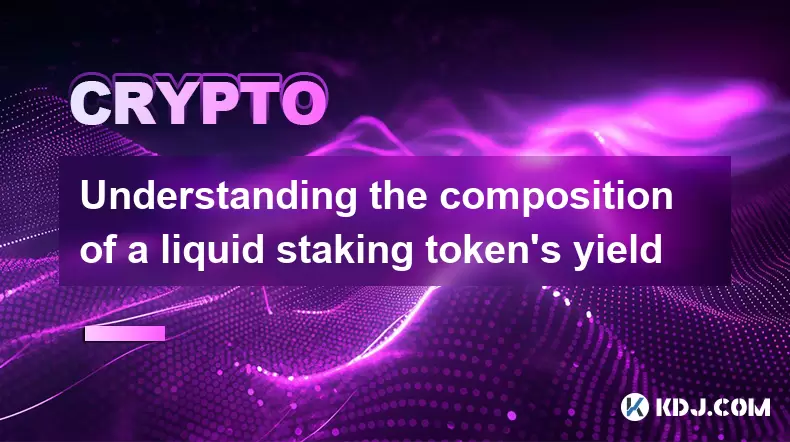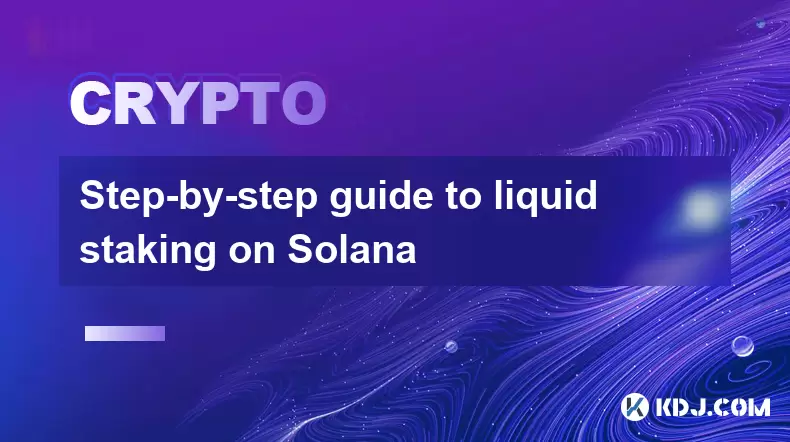-
 Bitcoin
Bitcoin $118900
1.66% -
 Ethereum
Ethereum $3735
1.35% -
 XRP
XRP $3.506
0.71% -
 Tether USDt
Tether USDt $1.000
-0.01% -
 BNB
BNB $799.4
5.78% -
 Solana
Solana $202.0
1.87% -
 USDC
USDC $0.9999
0.00% -
 Dogecoin
Dogecoin $0.2661
1.89% -
 Cardano
Cardano $0.8877
1.59% -
 TRON
TRON $0.3173
2.45% -
 Hyperliquid
Hyperliquid $45.00
2.59% -
 Stellar
Stellar $0.4723
3.40% -
 Sui
Sui $3.970
1.32% -
 Chainlink
Chainlink $19.67
1.94% -
 Hedera
Hedera $0.2710
1.99% -
 Avalanche
Avalanche $25.74
-0.01% -
 Bitcoin Cash
Bitcoin Cash $528.1
1.98% -
 Litecoin
Litecoin $120.1
3.57% -
 Shiba Inu
Shiba Inu $0.00001525
1.26% -
 UNUS SED LEO
UNUS SED LEO $8.989
-0.01% -
 Toncoin
Toncoin $3.304
1.74% -
 Polkadot
Polkadot $4.531
3.38% -
 Uniswap
Uniswap $10.74
2.51% -
 Ethena USDe
Ethena USDe $1.001
0.00% -
 Monero
Monero $325.5
2.44% -
 Pepe
Pepe $0.00001413
1.31% -
 Bitget Token
Bitget Token $4.860
0.85% -
 Dai
Dai $0.9999
0.01% -
 Aave
Aave $307.3
-2.07% -
 Bittensor
Bittensor $448.8
2.91%
LST vs LRT difference
LST tokens, like stETH, let users earn staking rewards while maintaining liquidity, whereas LRT tokens dynamically optimize liquidity positions across DeFi strategies for enhanced yield.
Jul 23, 2025 at 04:08 am

Understanding LST and LRT in the Cryptocurrency Ecosystem
In the evolving world of decentralized finance (DeFi) and blockchain-based financial instruments, terms like LST and LRT have gained prominence, especially within the Ethereum staking ecosystem. While both acronyms are related to staking and liquidity, they represent distinct concepts that serve different functions. Understanding the difference between LST and LRT is essential for users engaging in staking, yield farming, or liquidity provision.
What Is LST?
LST stands for Liquid Staking Token, a type of tokenized asset that represents staked cryptocurrency, typically Ethereum (ETH), while allowing the holder to retain liquidity. When a user stakes their ETH through a liquid staking protocol like Lido or Rocket Pool, they receive LST tokens in return. These tokens can be traded, lent, or used in DeFi protocols to generate additional yield.
- Users stake ETH and receive LST tokens (e.g., stETH from Lido).
- These tokens accrue staking rewards over time.
- LST tokens can be freely transferred and used in other DeFi platforms, enabling users to maintain liquidity while earning staking rewards.
This mechanism solves the problem of illiquidity associated with traditional staking, where funds are locked up for extended periods.
What Is LRT?
LRT stands for Liquidity Rebalancing Token, a newer concept that has emerged in advanced DeFi protocols and automated market makers (AMMs). Unlike LST, which is directly tied to staked assets, LRT is associated with liquidity positions that automatically rebalance or optimize yield across different pools or strategies.
- LRT tokens represent a dynamic liquidity position within a protocol.
- These tokens may adjust their underlying assets based on market conditions or algorithmic strategies.
- They are often used in next-generation AMMs or yield aggregators that aim to maximize returns through smart asset allocation.
The key feature of LRT is its ability to adapt, potentially offering higher efficiency and yield optimization compared to static liquidity provision.
Functional Differences Between LST and LRT
While both LST and LRT involve tokenized assets, their purposes and functionalities diverge significantly.
- LST focuses on staking liquidity. It allows users to stake their assets (like ETH) and receive a token that can be used elsewhere in DeFi. The value of LST grows over time as staking rewards accumulate.
- LRT focuses on liquidity optimization. It represents a dynamic position in a liquidity pool or yield strategy. LRT may change in composition or allocation automatically, depending on the protocol's logic.
These distinctions mean that LST holders primarily benefit from staking rewards, while LRT holders benefit from optimized liquidity strategies, which may include arbitrage, fee earnings, or yield farming.
Technical and Operational Differences
From a technical perspective, the mechanisms behind LST and LRT differ significantly, especially in how they are minted, managed, and redeemed.
- LST is minted upon staking and is redeemable for the underlying staked asset plus accrued rewards. For example, 1 stETH from Lido can eventually be exchanged for more than 1 ETH due to staking yield.
- LRT is minted when liquidity is deposited into a smart contract that actively manages or reallocates assets. The redemption value of LRT depends on the performance of the underlying strategy, which may include multiple assets or complex rebalancing logic.
Additionally, LST tokens are generally more stable in composition, while LRT tokens may exhibit more volatility or complexity due to dynamic asset management.
Risk and Use Case Considerations
When evaluating LST vs LRT, it's important to consider the risk profiles and use cases associated with each.
- LST carries risks related to the staking protocol's security and potential slashing events, especially in proof-of-stake networks. However, it offers a relatively straightforward and stable yield mechanism.
- LRT involves risks tied to the smart contract strategies and market exposure. Since LRT positions may involve multiple assets or leverage, they can be more volatile and complex.
Use cases also differ:
- LST is ideal for users who want to earn staking rewards without losing liquidity.
- LRT is suitable for advanced users seeking optimized liquidity provision and yield generation across dynamic strategies.
FAQ: Frequently Asked Questions
Q: Can LST and LRT be used together in DeFi protocols?
Yes, it's possible to use LST tokens as collateral or liquidity in DeFi protocols that accept tokenized staked assets, and some platforms are beginning to integrate LRT tokens as well. However, the compatibility depends on the specific DeFi platform and its support for these token types.
Q: Are LST and LRT available on all blockchains?
Currently, LST is most commonly associated with Ethereum and its staking derivatives, although similar concepts are emerging on other proof-of-stake chains. LRT is still a relatively new concept, primarily found in experimental or advanced DeFi protocols, and its availability is limited to specific platforms.
Q: How do I redeem LST or LRT tokens for their underlying assets?
For LST tokens, redemption typically involves interacting with the staking protocol's smart contract, often through a bridge or withdrawal queue. For LRT tokens, redemption depends on the specific protocol and may involve unwinding a liquidity position or participating in a rebalancing event.
Q: Are there any fees associated with using LST or LRT?
Yes, both LST and LRT may involve fees, such as deposit/withdrawal fees for staking protocols or performance/management fees in the case of LRT strategies. Users should review the fee structures of the respective protocols before interacting with them.
Disclaimer:info@kdj.com
The information provided is not trading advice. kdj.com does not assume any responsibility for any investments made based on the information provided in this article. Cryptocurrencies are highly volatile and it is highly recommended that you invest with caution after thorough research!
If you believe that the content used on this website infringes your copyright, please contact us immediately (info@kdj.com) and we will delete it promptly.
- Binance, Leverage, and Perpetual Contracts: A Trader's Deep Dive
- 2025-07-23 16:50:12
- Cardano, Hoskinson, and the ADA Rally: What's Driving the Surge?
- 2025-07-23 17:30:13
- Bitcoin Profit-Taking, Whale Behavior, and Technical Analysis: A July 2025 Snapshot
- 2025-07-23 17:30:13
- Tom Lee's Bold Bitcoin Prediction: $250K by '25 or $3M Long Term?
- 2025-07-23 16:30:12
- VeChain (VET) Price Prediction: Bullish Breakout or Short-Term Skepticism?
- 2025-07-23 16:50:12
- Jackbit Casino: Your Ticket to Crypto Bonuses and Free Spins in 2025
- 2025-07-23 16:30:12
Related knowledge

Understanding the composition of a liquid staking token's yield
Jul 20,2025 at 09:07am
What Is a Liquid Staking Token?A liquid staking token is a representative asset issued to users who stake their native cryptocurrency on a proof-of-st...

Is it better to stake directly or use a liquid staking service?
Jul 22,2025 at 08:21pm
Understanding the Basics of StakingStaking in the context of blockchain and cryptocurrency refers to the process of locking up digital assets to suppo...

What to do during an LST depeg event
Jul 20,2025 at 04:57pm
Understanding LST Depeg EventsAn LST (Liquid Staking Token) depeg event occurs when the token, which is typically pegged to the value of the underlyin...

Can you provide liquidity with liquid staking tokens?
Jul 22,2025 at 10:22am
Understanding Liquid Staking TokensLiquid staking tokens (LSTs) are derivative tokens that represent staked assets on a proof-of-stake (PoS) blockchai...

What are the best wallets for storing LSTs?
Jul 21,2025 at 03:14pm
Understanding LSTs and the Need for Secure StorageLSTs, or Liquid Staking Tokens, are derivative tokens representing staked assets on a blockchain. Wh...

Step-by-step guide to liquid staking on Solana
Jul 20,2025 at 06:42am
What is Liquid Staking on Solana?Liquid staking is a mechanism that allows users to stake their cryptocurrency while retaining liquidity through the i...

Understanding the composition of a liquid staking token's yield
Jul 20,2025 at 09:07am
What Is a Liquid Staking Token?A liquid staking token is a representative asset issued to users who stake their native cryptocurrency on a proof-of-st...

Is it better to stake directly or use a liquid staking service?
Jul 22,2025 at 08:21pm
Understanding the Basics of StakingStaking in the context of blockchain and cryptocurrency refers to the process of locking up digital assets to suppo...

What to do during an LST depeg event
Jul 20,2025 at 04:57pm
Understanding LST Depeg EventsAn LST (Liquid Staking Token) depeg event occurs when the token, which is typically pegged to the value of the underlyin...

Can you provide liquidity with liquid staking tokens?
Jul 22,2025 at 10:22am
Understanding Liquid Staking TokensLiquid staking tokens (LSTs) are derivative tokens that represent staked assets on a proof-of-stake (PoS) blockchai...

What are the best wallets for storing LSTs?
Jul 21,2025 at 03:14pm
Understanding LSTs and the Need for Secure StorageLSTs, or Liquid Staking Tokens, are derivative tokens representing staked assets on a blockchain. Wh...

Step-by-step guide to liquid staking on Solana
Jul 20,2025 at 06:42am
What is Liquid Staking on Solana?Liquid staking is a mechanism that allows users to stake their cryptocurrency while retaining liquidity through the i...
See all articles

























































































